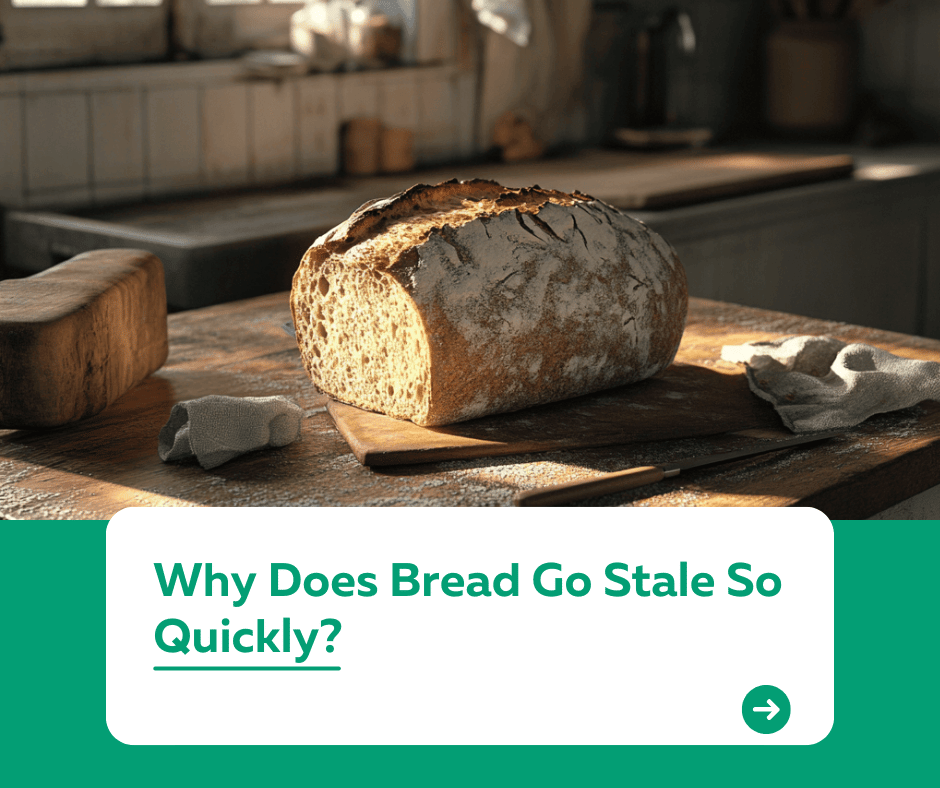
Introduction
Have you ever baked or bought fresh bread, only to find it hard and stale after just a day or two? Why does bread go stale so quickly, and can anything be done to slow it down? Understanding the science behind bread staleness can help you preserve its freshness and enjoy every slice for longer.
1. What Causes Bread to Go Stale?
Bread staleness is primarily caused by a process called retrogradation, which affects the starch molecules in the bread. Here’s how it works:
- Fresh Bread: When bread is freshly baked, its starch molecules are gelatinized due to the heat and moisture, keeping the bread soft and fluffy.
- Cooling and Aging: Over time, these starch molecules begin to crystallize, causing the bread to lose moisture and firm up.
- Moisture Migration: Moisture from the bread’s interior migrates to the crust, leaving the center dry and the crust tough.
2. Factors That Speed Up Staleness
Several factors can accelerate the staling process:
- Storage Temperature: Bread stored in the fridge stales faster because the crystallization of starch molecules occurs more quickly at cooler temperatures.
- Air Exposure: Exposure to air dries out the bread, hastening the staling process.
- Type of Bread: Breads with lower fat content, like baguettes, stale faster than enriched breads with butter or oil.
3. How to Keep Bread Fresh Longer
Here are some effective tips to preserve your bread’s freshness:
- Store in a Bread Box: Bread boxes create a controlled environment with moderate humidity and airflow, which helps slow down staleness.
- Freeze Your Bread: Freezing stops the retrogradation process. Slice the bread before freezing, so you can defrost only what you need.
- Avoid Refrigeration: Contrary to popular belief, refrigerating bread speeds up staling. Store bread at room temperature instead.
- Wrap It Properly: Use a clean kitchen towel, paper bag, or plastic wrap to prevent air exposure while avoiding excessive moisture buildup.
4. Reviving Stale Bread
If your bread has already gone stale, don’t throw it away! You can revive it using these simple methods:
- Steam It: Wrap the bread in aluminum foil and place it in a preheated oven at 300°F (150°C) for 10–15 minutes. This rehydrates the starch molecules, softening the bread.
- Microwave It: Wrap the bread in a damp paper towel and microwave it for 10–15 seconds. Be cautious not to overheat, as it can become chewy.
- Use It in Recipes: Stale bread is perfect for recipes like French toast, bread pudding, croutons, or breadcrumbs.
5. The Difference Between Staleness and Spoilage
It’s important to distinguish between stale and spoiled bread:
- Stale Bread: Safe to eat but dry and firm. It can often be revived or repurposed.
- Spoiled Bread: Bread with visible mold or an off smell should be discarded immediately.
Conclusion
Bread staleness is a natural process caused by retrogradation, but with the right storage techniques and a few tricks, you can slow it down or even revive stale bread. By understanding the science of staleness, you can enjoy fresh, delicious bread for longer and make the most out of every loaf. For more kitchen tips and insights, visit kuestion.co.